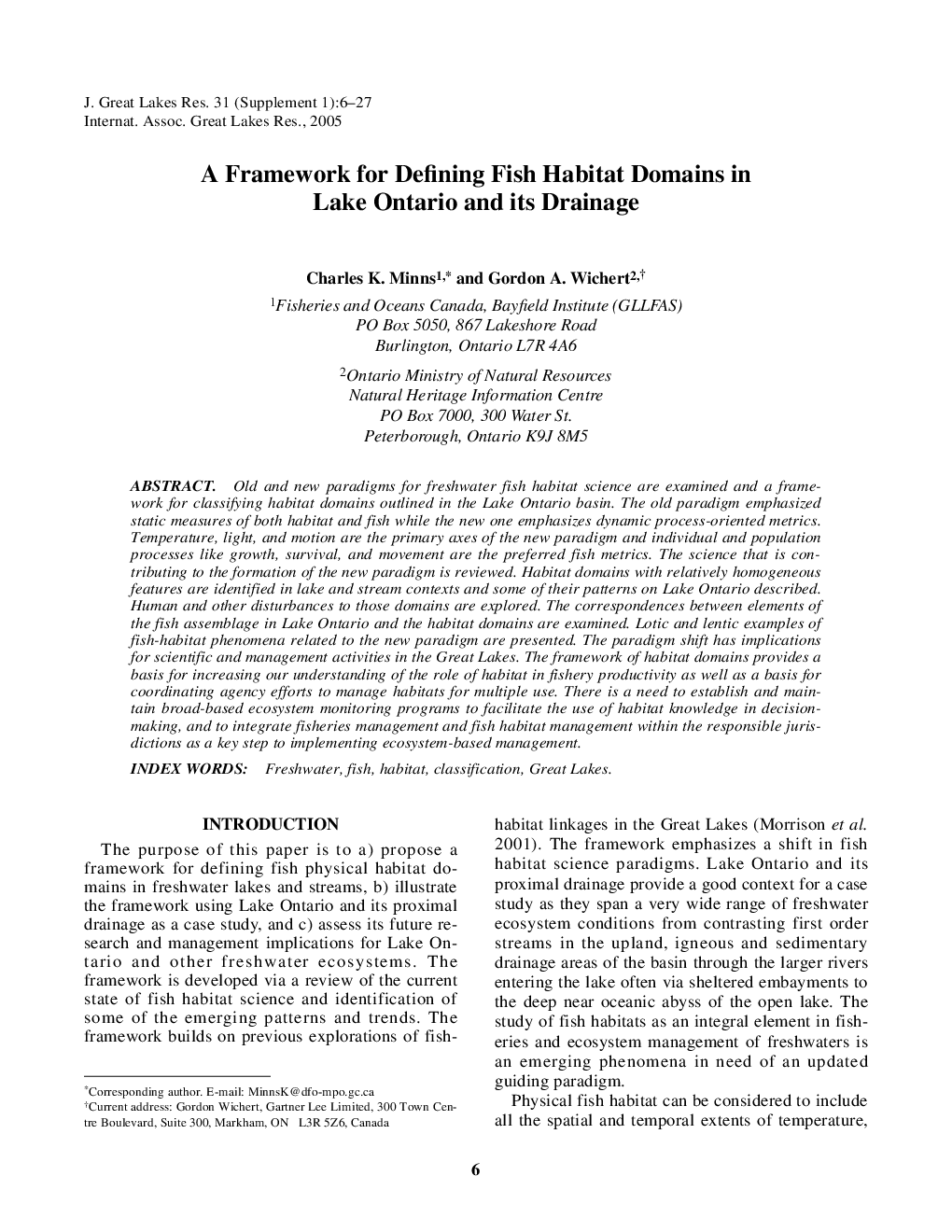| کد مقاله | کد نشریه | سال انتشار | مقاله انگلیسی | نسخه تمام متن |
|---|---|---|---|---|
| 9450276 | 1306745 | 2005 | 22 صفحه PDF | دانلود رایگان |
عنوان انگلیسی مقاله ISI
A Framework for Defining Fish Habitat Domains in Lake Ontario and its Drainage
دانلود مقاله + سفارش ترجمه
دانلود مقاله ISI انگلیسی
رایگان برای ایرانیان
کلمات کلیدی
موضوعات مرتبط
مهندسی و علوم پایه
علوم زمین و سیارات
علوم زمین و سیاره ای (عمومی)
پیش نمایش صفحه اول مقاله

چکیده انگلیسی
Old and new paradigms for freshwater fish habitat science are examined and a framework for classifying habitat domains outlined in the Lake Ontario basin. The old paradigm emphasized static measures of both habitat and fish while the new one emphasizes dynamic process-oriented metrics. Temperature, light, and motion are the primary axes of the new paradigm and individual and population processes like growth, survival, and movement are the preferred fish metrics. The science that is contributing to the formation of the new paradigm is reviewed. Habitat domains with relatively homogeneous features are identified in lake and stream contexts and some of their patterns on Lake Ontario described. Human and other disturbances to those domains are explored. The correspondences between elements of the fish assemblage in Lake Ontario and the habitat domains are examined. Lotic and lentic examples of fish-habitat phenomena related to the new paradigm are presented. The paradigm shift has implications for scientific and management activities in the Great Lakes. The framework of habitat domains provides a basis for increasing our understanding of the role of habitat in fishery productivity as well as a basis for coordinating agency efforts to manage habitats for multiple use. There is a need to establish and maintain broad-based ecosystem monitoring programs to facilitate the use of habitat knowledge in decisionmaking, and to integrate fisheries management and fish habitat management within the responsible jurisdictions as a key step to implementing ecosystem-based management.
ناشر
Database: Elsevier - ScienceDirect (ساینس دایرکت)
Journal: Journal of Great Lakes Research - Volume 31, Supplement 1, 2005, Pages 6-27
Journal: Journal of Great Lakes Research - Volume 31, Supplement 1, 2005, Pages 6-27
نویسندگان
Charles K. Minns, Gordon A. Wichert,